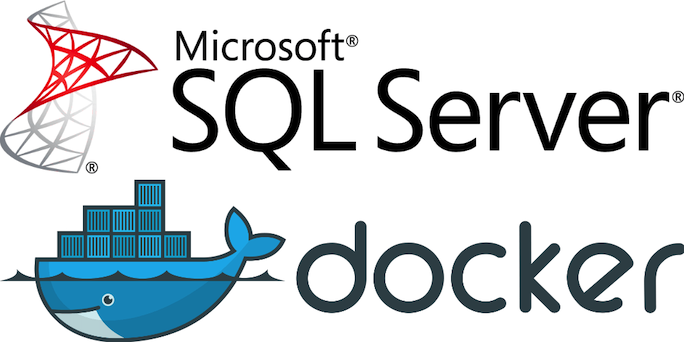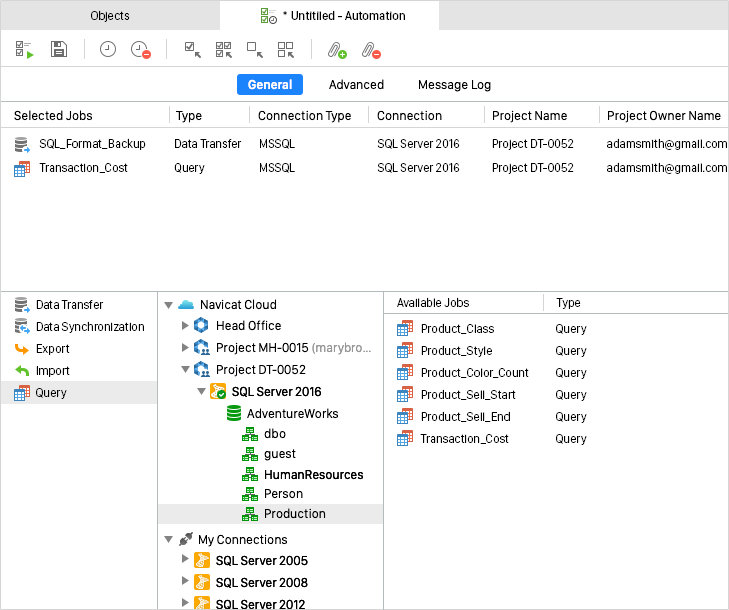Stops mysql; Sets mysql to run without bothering with privileges; Opens a mysql prompt; Updates the root password to 'password' - you should use something else here. 'Cleans' passwords (some might say this is unnecessary) Exits the mysql prompt; Starts mysql; That should allow you to run mysql -u root -p and use the new password set in #4. MySQL is arguably one of the most professional software packages that is designed to help users better manage and upgrade an existing website. As many tools are streamlined and intuitive, one-the-fly adjustments can be made while avoiding downtime. This is often very important when referring to industries such as e-commerce and customer service. MySQL client can be started from the terminal or command prompt by navigating to the directory as mentioned below for Mac/Linux or Windows. MAC - /usr/local/mysql/bin WINDOWS - C:Program FilesMySQLMySQL Server 8.0. The MySQL command-line client can be started by running the MySQL executable in the above directories.
For a list of macOS versions that the MySQL server supports, see https://www.mysql.com/support/supportedplatforms/database.html.
MySQL Database Server is designed for enterprise organizations delivering business critical database applications. It gives corporate developers, DBAs and ISVs an array of new enterprise features. MySQL Community Edition is a freely downloadable version of the world's most popular open source database that is supported by an active community of open source developers and enthusiasts. MySQL Cluster Community Edition is available as a separate download. The reason for this change is so that MySQL Cluster can provide more frequent updates and support using the latest sources of MySQL.
MySQL for macOS is available in a number of different forms:
Native Package Installer, which uses the native macOS installer (DMG) to walk you through the installation of MySQL. For more information, see Chapter 2, Installing MySQL on macOS Using Native Packages. You can use the package installer with macOS. The user you use to perform the installation must have administrator privileges.
Compressed TAR archive, which uses a file packaged using the Unix tar and gzip commands. To use this method, you will need to open a Terminal window. You do not need administrator privileges using this method, as you can install the MySQL server anywhere using this method. For more information on using this method, you can use the generic instructions for using a tarball, Installing MySQL on Unix/Linux Using Generic Binaries.
In addition to the core installation, the Package Installer also includes Chapter 3, Installing a MySQL Launch Daemon and Chapter 4, Installing and Using the MySQL Preference Pane, both of which simplify the management of your installation.
For additional information on using MySQL on macOS, see Chapter 5, General Notes on Installing MySQL on macOS.
Welcome back to another SecuringNinja tutorial. No cyber security researcher should be with out a database to practice their skills on, or just to store tons of relational data. Today we will show you how to install MySQL on a Mac. Having a local database is perfect for running websites locally, or for providing persistent storage for another application.
In this article we cover how to:
MySQL is very straight forward to install on a Mac. If you do not already have the Homebrew package manager for Mac you'll need to install that first. If you would rather not install Homebrew you can also install MySQL using the DMG file available on the MySQL site.
Installing Homebrew on Mac

Lets start by opening up Terminal and installing Homebrew. Homebrew is a macOS package manager that makes installing packages on macOS a breeze.

To install Homebrew on Mac run the following command:
Once the install is complete go ahead and run an update to test that everything is working correctly.
With Homebrew installed it is a simple matter to install MySQL.
Installing MySQL on Mac with Brew
Installing MySQL with Brew is a breeze. All it takes is:

This will install the most recent version of the package available on Brew. As of this writing it is MySQL version 8.0. To install a different version simply append the version to the end of the package with an @ symbol. For example, to install MySQL 5.7 use:
If you don't want to install Homebrew you can also install MySQL with the DMG file available for download as described below.
Installing MySQL with a DMG file
You can also install MySQL via the DMG file on the MySQL downloads page. This will add a MySQL preference pane in System Preferences as well. You can start and stop your server from here too.
First begin by downloading and mounting the DMG file available from the MySQL Community downloads page. Make sure you grab the appropriate DMG for your OS version.
Mount the DMG and double click the .pkg file to begin the installation.
Step through the installer installer and make a note of your temporary root password. You will need this for the initial connection to the server. DO NOT LOSE IT!
Sql For Mac
The server will require that you update your password on the first login. MySQL server is now installed. To start the server use launchctl or the MySQL preference pane in System Preferences. The server uses very few resources while running in the background so there really is no need to start and stop the server each time.
To start the server via launchctl:
Mysql For Mac Download
This instructs MySQL to start when the system boots up.
In so doing it will wake Mac first.I am typically trying to access my Mac using Parallels Access from my iPad Mini. With a device that acts as a Bonjour Sleep Proxy you can use any standard protocol just to do the wake. My Apple TV doesn't know about that and so doesn't get registered to handle it. THen you follow it with the FTPSE file transfer.so you could do for examplessh user ls wcMay even be able to dossh user ls /dev/null && sleep 30 && ftpse commandWhich will run command on Mac without displling output, wait for 30 seconds then run your ftpse commandthat command should get sent by the Apple TV or Airport router to the mac to run. Dell wake on lan.
You can also start and stop MySQL through the System Preferences pane. Open System Preferences and select MySQL:
And finally, start or stop the server as needed.
From this preference pane you can also edit the MySQL server configuration, re-initialize the database, and uninstall MySQL server entirely. We cover how to uninstall MySQL on Mac in the next section.
Uninstalling MySQL on Mac
Mysql For Mac Os X
If you installed MySQL via the DMG file method then uninstalling is extremely straight forward. Navigate to the MySQL preference pane in System Preferences, and click Uninstall. Thats it! MySQL has been uninstalled.
If you however installed MySQL using the Brew method described above, then there are a couple of extra steps.
Uninstalling MySQL on Mac with Brew
Mysql For Macbook Air

Lets start by opening up Terminal and installing Homebrew. Homebrew is a macOS package manager that makes installing packages on macOS a breeze.
To install Homebrew on Mac run the following command:
Once the install is complete go ahead and run an update to test that everything is working correctly.
With Homebrew installed it is a simple matter to install MySQL.
Installing MySQL on Mac with Brew
Installing MySQL with Brew is a breeze. All it takes is:
This will install the most recent version of the package available on Brew. As of this writing it is MySQL version 8.0. To install a different version simply append the version to the end of the package with an @ symbol. For example, to install MySQL 5.7 use:
If you don't want to install Homebrew you can also install MySQL with the DMG file available for download as described below.
Installing MySQL with a DMG file
You can also install MySQL via the DMG file on the MySQL downloads page. This will add a MySQL preference pane in System Preferences as well. You can start and stop your server from here too.
First begin by downloading and mounting the DMG file available from the MySQL Community downloads page. Make sure you grab the appropriate DMG for your OS version.
Mount the DMG and double click the .pkg file to begin the installation.
Step through the installer installer and make a note of your temporary root password. You will need this for the initial connection to the server. DO NOT LOSE IT!
Sql For Mac
The server will require that you update your password on the first login. MySQL server is now installed. To start the server use launchctl or the MySQL preference pane in System Preferences. The server uses very few resources while running in the background so there really is no need to start and stop the server each time.
To start the server via launchctl:
Mysql For Mac Download
This instructs MySQL to start when the system boots up.
In so doing it will wake Mac first.I am typically trying to access my Mac using Parallels Access from my iPad Mini. With a device that acts as a Bonjour Sleep Proxy you can use any standard protocol just to do the wake. My Apple TV doesn't know about that and so doesn't get registered to handle it. THen you follow it with the FTPSE file transfer.so you could do for examplessh user ls wcMay even be able to dossh user ls /dev/null && sleep 30 && ftpse commandWhich will run command on Mac without displling output, wait for 30 seconds then run your ftpse commandthat command should get sent by the Apple TV or Airport router to the mac to run. Dell wake on lan.
You can also start and stop MySQL through the System Preferences pane. Open System Preferences and select MySQL:
And finally, start or stop the server as needed.
From this preference pane you can also edit the MySQL server configuration, re-initialize the database, and uninstall MySQL server entirely. We cover how to uninstall MySQL on Mac in the next section.
Uninstalling MySQL on Mac
Mysql For Mac Os X
If you installed MySQL via the DMG file method then uninstalling is extremely straight forward. Navigate to the MySQL preference pane in System Preferences, and click Uninstall. Thats it! MySQL has been uninstalled.
If you however installed MySQL using the Brew method described above, then there are a couple of extra steps.
Uninstalling MySQL on Mac with Brew
Mysql For Macbook Air
The steps below show how to uninstall MySQL installed with Brew. Begin by finding any running MySQL processes and stopping them. Then uninstall MySQL and remove all files.
What to do with your new database
Mysql For Mac Install
Now that you've got a local database up and running you may want to take a look at how a SQL injection attack works. Your new database will be great for practice! If you have any issues getting your database up and running, please reach out in the comments below. We would love to assist you!
